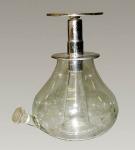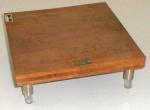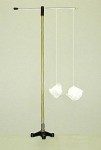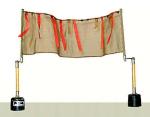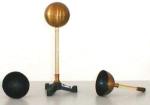Description
The brass cloth is provided on the two sides with many strips of differently coloured
tissue paper. The cloth lies on two very heavy insulating feet, so as to keep the shape that
we give it, i.e. flat, concave or an S shape.
With a small chain we connect the cloth to the electrostatic machine. In the first
case (flat) we can see the strips rise on the two sides, in the second case (concave) only
the strip on the external side rises, in the third case half the strips will rise on both
sides.
In the second case if we change the curvature of the cloth, the lower strips rise and
the upper strips get lower.
|
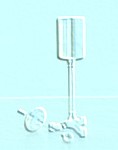

 Menu
Menu
